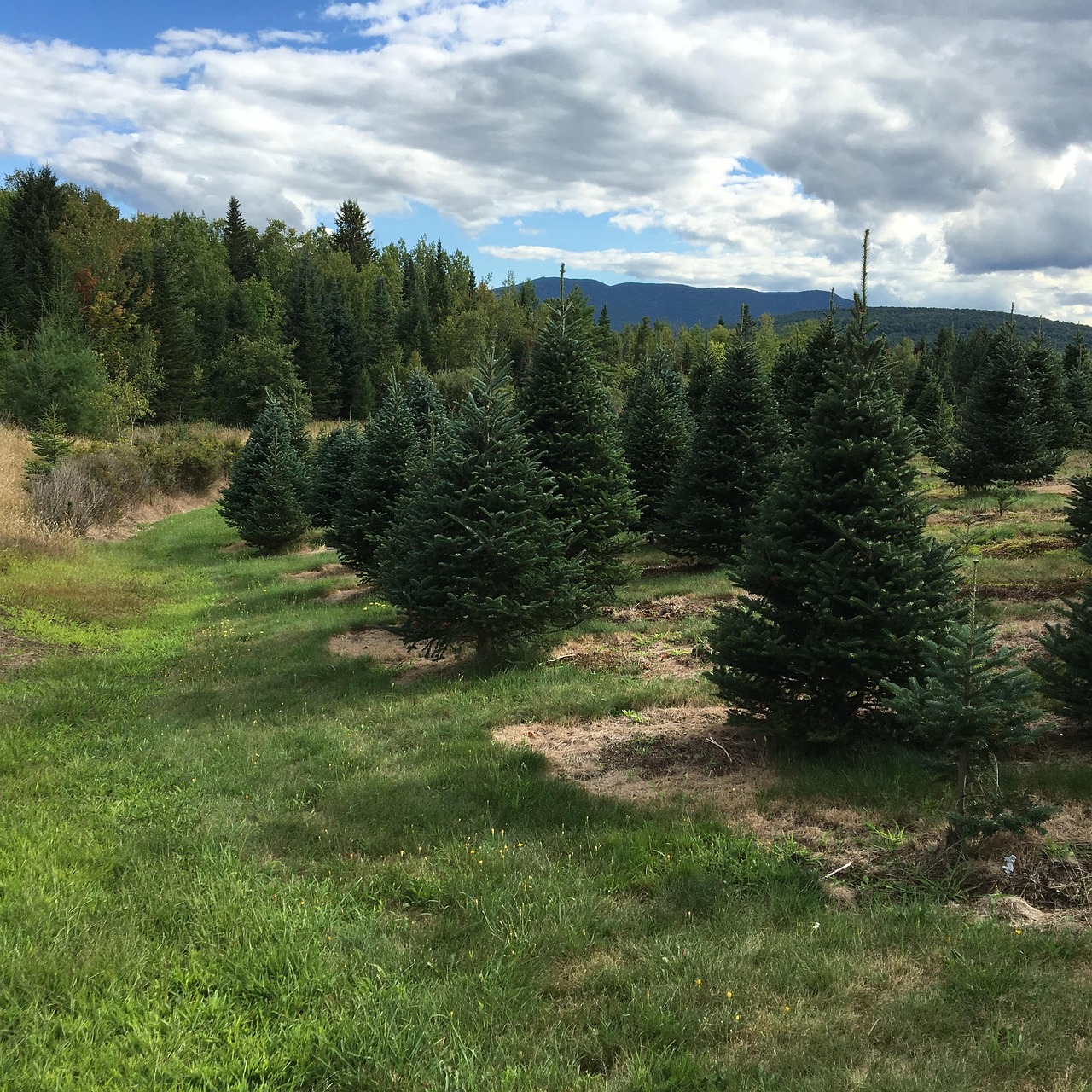Balsam fir trees are generally not considered ideal for lumber due to their softness and susceptibility to damage. However, they can be used for specific applications like Christmas trees, pulpwood, and some construction needs where strength is less critical.
Introduction to Balsam Fir Trees
Balsam fir trees (Abies balsamea) are native to North America and are primarily found in the northeastern United States and Canada. These evergreen trees thrive in colder climates and often grow in moist, well-drained soils. They are easily recognizable by their fragrant needles, which have a distinctive dark green color with a silvery underside.

The balsam fir is a popular choice for ornamental planting and is widely used during the holiday season as a Christmas tree. Its pleasing aroma and symmetrical shape make it a favorite among many families. Despite its popularity as a Christmas tree, the suitability of balsam fir for lumber production has been a subject of discussion among foresters and lumber manufacturers.
Characteristics of Balsam Fir Wood
The wood of balsam fir has specific characteristics that affect its suitability for various applications. Understanding these traits can help determine where balsam fir may be used effectively.
| Wood Property | Description |
|---|---|
| Density | Relatively low density compared to other softwoods, making it lightweight. |
| Grain Pattern | Fine and even grain, which can give it an attractive appearance. |
| Strength | Moderately strong but not as durable or robust as other lumber options. |
| Workability | Easy to work with; cuts and shapes well with hand or power tools. |
| Resistance | Less resistant to decay and insect damage compared to other hardwoods. |
Due to its low density, balsam fir is not as strong as other types of lumber such as Douglas fir or spruce. This characteristic limits its use in structural applications where strength is crucial. However, its fine grain and even texture make it appealing for certain aesthetic applications.

Common Uses of Balsam Fir
Balsam fir has several uses, many of which do not involve traditional lumber applications. Here are some common uses:
- Christmas Trees: Balsam fir is favored for its classic appearance, fragrance, and needle retention.
- Pulpwood: The wood is often used in the production of paper and cardboard due to its fibrous nature.
- Crafts and Décor: The attractive grain makes balsam fir suitable for small wooden crafts, furniture accents, and decorative pieces.
- Musical Instruments: Some makers use balsam fir for crafting certain parts of musical instruments due to its tonal qualities.
While there are various applications for balsam fir, it is essential to consider its limitations when it comes to structural use. The wood’s softness means that it can be prone to dents and scratches, making it less suitable for high-traffic areas or applications where durability is essential.
Environmental Impact and Sustainability
The environmental impact of using balsam fir lumber must also be considered. Balsam fir trees grow in abundance in their native habitats, which makes them a renewable resource when managed sustainably. Responsible forestry practices can help maintain healthy populations of balsam fir while providing wood products for various uses.

The cultivation of balsam fir can also support local economies, particularly in rural areas where forestry plays an important role. By promoting sustainable practices, communities can benefit from the economic opportunities while preserving the natural environment.
Benefits of Using Balsam Fir in Various Applications
While balsam fir may not be the first choice for traditional lumber, it does have numerous benefits in specific applications. Understanding these advantages can help individuals and businesses make informed choices about using balsam fir in their projects.
Lightweight Nature
One of the most significant benefits of balsam fir is its lightweight nature. This property makes it easier to handle and transport compared to denser woods. For certain applications, this can translate into reduced shipping costs and easier installation.
Cost-Effectiveness
Balsam fir is often more affordable than other types of lumber, especially hardwoods. This cost-effectiveness can make it an attractive option for budget-conscious projects.

Low Environmental Impact
As mentioned earlier, balsam fir trees grow abundantly in their native regions. This means that harvesting them can have a lower environmental impact when done sustainably. Additionally, the use of local resources helps reduce the carbon footprint associated with transporting lumber over long distances.
Structural Limitations of Balsam Fir
Despite its benefits, it is vital to acknowledge the structural limitations of balsam fir wood. Understanding these drawbacks can guide users in selecting the right applications for this material.
Softness and Durability
The softness of balsam fir makes it less durable than many other types of wood. It is prone to dents, scratches, and other forms of damage, which limits its use in high-traffic areas or heavy-duty applications. When considering balsam fir for projects, it’s essential to evaluate the expected wear and tear on the material.
Moisture Sensitivity
Balsam fir wood can also be sensitive to moisture. High humidity levels or exposure to water can lead to warping and swelling. For this reason, it may not be suitable for outdoor applications unless properly treated and maintained. Users should consider applying protective finishes to enhance its resistance to moisture.
Alternatives to Balsam Fir for Lumber Projects
For those who are looking for stronger and more durable options, several alternatives to balsam fir can be considered. These alternatives may offer the strength and resistance needed for various applications.
- Douglas Fir: Known for its strength and durability, Douglas fir is a popular choice for construction and heavy-duty applications.
- Spruce: Similar in weight to balsam fir but generally stronger, spruce is often used in framing and other structural applications.
- Pine: Various species of pine offer a good balance between strength and affordability, making them suitable for many woodworking projects.
- Cedar: Known for its natural resistance to decay and insects, cedar is ideal for outdoor projects and furniture.
Choosing the Right Application for Balsam Fir
When considering balsam fir for a project, it’s essential to evaluate the intended use carefully. Here are some recommendations on how to select appropriate applications:
- Identify the Purpose: Determine whether the project requires structural integrity or if aesthetics are the primary concern.
- Assess Environmental Factors: Consider where the wood will be used, especially regarding moisture exposure and temperature fluctuations.
- Consult Experts: When in doubt, seek advice from lumber suppliers or woodworking professionals who can provide insights into suitable materials.
- Test Samples: If possible, test small samples of balsam fir in your intended application to assess performance before full-scale use.
By following these guidelines, users can make informed decisions about when and how to use balsam fir effectively in their projects while avoiding potential pitfalls associated with its limitations.
Future Considerations for Balsam Fir Lumber
The future of balsam fir lumber depends on various factors including market demand, sustainability practices, and innovations in wood treatment. As environmental awareness grows, more consumers are seeking sustainable options. Balsam fir’s renewable nature may position it favorably in this evolving market.
Furthermore, advancements in wood preservation technologies may enhance the durability and moisture resistance of balsam fir, expanding its potential applications in the future. Researchers and manufacturers continue to explore ways to improve the properties of softwoods like balsam fir to make them more competitive against harder varieties.
Processing and Treatment of Balsam Fir Lumber
To maximize the usability and longevity of balsam fir lumber, proper processing and treatment are essential. These steps can enhance the wood’s natural characteristics and mitigate some of its limitations. Understanding the best practices for processing balsam fir can lead to better performance in various applications.
Sawing and Milling
The first step in processing balsam fir is sawing and milling. Because it is a softwood, balsam fir is relatively easy to cut and shape. However, attention must be paid to the following:
- Blade Selection: Use sharp blades designed for softwoods to ensure clean cuts and reduce the risk of tearing.
- Thickness and Grains: Consider the thickness of the lumber based on its intended use. Thicker boards may be required for structural applications, while thinner boards can be used for decorative purposes.
- Drying Process: Properly drying the wood is crucial to prevent warping and cracking. Balsam fir should be kiln-dried or air-dried to an appropriate moisture content before use.
Treatment Options
To improve the durability and resistance of balsam fir, various treatment options can be applied:
- Pressure Treatment: This process involves forcing preservatives into the wood under pressure, which can enhance resistance to decay, insects, and moisture.
- Staining and Sealing: Applying a stain can enhance the appearance while sealing the wood provides a protective barrier against moisture and environmental factors.
- Natural Oils: Using natural oils can help to nourish the wood and offer a level of protection without synthetic chemicals.
Market Trends Affecting Balsam Fir Lumber
The market for balsam fir lumber is influenced by several trends that are shaping consumer preferences and industry practices. Understanding these trends can help stakeholders make informed decisions regarding production and sales.
Sustainability Demand
With increasing awareness of environmental issues, many consumers are seeking sustainable products. Balsam fir, when harvested responsibly, fits into this niche. The demand for sustainably-sourced wood is expected to continue growing, creating opportunities for balsam fir producers who prioritize eco-friendly practices.
Growth in DIY Projects
The rise of DIY (do-it-yourself) culture has led to increased interest in various types of lumber for home improvement projects. Balsam fir’s affordability and ease of work make it appealing for hobbyists and DIY enthusiasts. From crafting furniture to creating decorations, balsam fir can be an attractive option for personal projects.
Innovations in Wood Products
Innovations in wood products can also impact the future of balsam fir lumber. New processing methods, treatments, and finishing techniques can enhance its properties, making it more competitive with other types of wood. For example, engineered wood products that incorporate balsam fir may provide benefits such as improved strength and stability while retaining its aesthetic appeal.
Regional Considerations for Balsam Fir Lumber Production
The region where balsam fir is harvested plays a significant role in its lumber production. Each area presents unique challenges and opportunities that can affect quality, availability, and marketability.
Northeast United States
The northeast United States is the primary growing region for balsam fir. This region’s colder climate is conducive to the tree’s growth, but it also presents challenges such as limited growing seasons. Proper management practices are essential to ensure a sustainable supply of balsam fir from this area.
Canada
In Canada, balsam fir grows abundantly in boreal forests. The vast forested areas provide ample opportunity for harvesting. However, regulatory frameworks surrounding forestry practices must be adhered to in order to protect these ecosystems. Canadian producers often emphasize responsible harvesting methods that align with sustainability goals.
Challenges Facing Balsam Fir Lumber Producers
While there are opportunities within the balsam fir lumber market, several challenges must also be addressed:
- Pest Infestation: Balsam fir trees can be susceptible to pests such as the spruce budworm, which can affect overall tree health and lumber quality.
- Market Competition: Competition from stronger hardwoods and other softwoods may limit market penetration for balsam fir lumber.
- Climate Change Effects: Shifts in climate patterns could impact the growth conditions for balsam fir trees, leading to changes in availability over time.
Addressing these challenges will require collaboration among producers, researchers, and policymakers to ensure the sustainable growth of balsam fir lumber production while meeting market demands.
Future Innovations and Research Directions
As the demand for sustainable and eco-friendly building materials grows, innovations in the lumber industry are becoming increasingly important. Researchers and industry experts are exploring various avenues to enhance the properties of balsam fir wood and expand its applications.
Genetic Research
One promising area of research involves genetic studies of balsam fir. By understanding the genetic makeup of these trees, scientists can identify traits that contribute to disease resistance, faster growth rates, and improved wood quality. Selective breeding programs could lead to the development of more resilient balsam fir varieties that are better suited for lumber production.
Advancements in Wood Treatments
Innovations in wood preservation techniques are also on the horizon. New treatments that enhance moisture resistance and durability without compromising environmental integrity can make balsam fir a more viable option for various applications. For instance, bio-based preservatives derived from natural sources are being explored as alternatives to traditional chemical treatments, providing protection while being eco-friendly.
Alternative Uses for Balsam Fir
Beyond traditional lumber applications, there is potential for balsam fir to be used in alternative products. For example:
- Balsam Fir Oil: Extracted from the needles and bark, this oil is prized for its aromatic and therapeutic properties. It can be used in aromatherapy, cosmetics, and natural cleaning products.
- Balsam Fir Fiber: The fibrous material of balsam fir can be utilized in composite products or as raw material for insulation, providing a sustainable option for manufacturing.
- Ecological Restoration: Balsam fir plays a critical role in forest ecosystems. Its management and cultivation may contribute to reforestation efforts and habitat restoration.
Economic Benefits of Balsam Fir Production
The production of balsam fir lumber can offer substantial economic benefits, particularly in regions where these trees are abundant. The following points highlight the potential for economic growth:
- Job Creation: The harvesting, processing, and distribution of balsam fir can create jobs in rural communities, boosting local economies.
- Export Opportunities: As the global market shifts towards sustainable materials, balsam fir can be marketed internationally as a renewable resource.
- Support for Local Businesses: Increased demand for balsam fir products can lead to growth for local sawmills, craft businesses, and related industries.
Final Thoughts
In summary, while balsam fir trees are not typically regarded as the best option for traditional lumber due to their softness and susceptibility to damage, they hold significant value in various contexts. Their lightweight nature, cost-effectiveness, and potential for sustainable harvesting make them appealing for specific applications. However, challenges such as pest infestation and climate change must be addressed to ensure the longevity of balsam fir as a marketable resource.
Future innovations in genetic research and wood treatment technology could enhance the usability of balsam fir, paving the way for new applications beyond conventional lumber. As consumer demand continues to shift towards sustainable options, balsam fir may find a more prominent place within the industry.
Ultimately, the key to maximizing the potential of balsam fir lies in responsible management practices that support environmental sustainability while meeting market needs. By fostering collaboration among producers, researchers, and policymakers, we can ensure that balsam fir remains a valuable asset in both ecological and economic landscapes.
